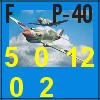
My name is Terence Co and I am the designer of Storm Over Taierzhuang, the Samurai Stalingrad which is going to be published by Firefight games.
I was born and raised in the Phillipines and started my wargaming there. I have been wargaming for more than 20 years.
This is my first wargame design and hopefully not my last as I intend to bring esoteric topics to the wargaming field. By 1938, the Second Sino-Japanese war was not going well for the Chinese. Since July 7, 1937, the Japanese conquered huge swathes of Northern and Eastern China and were steadily pushing deeper into
With the conquest of
The KMT generals also seeing an opportunity would lure Japanese forces to a cul de sac and then encircle them with numerically superior Chinese forces.
The town of
Li Tsung Jen, the KMT general of the 5th war area(with around 100,000 men in 9 divisions) which was given the task of defending
On January 26, 1938. The Japanese launched their offensive towards
The Japanese opened their attack on Taierzhuang on the evening of March 24, 1938 with a massive artillery bombardment on Chinese positions. The Chinese defenders weeks before had heavily fortified the town and the villages in the Taierzhuang district. In addition to the fortifications, the heavy rock which was used in the construction of the building in Taerizhuang made them virtual castles. Confronted by this grim defense, the Japanese were forced to slog through these heavy defenses and incurred horrendous casualties in the process while being constantly harried by Chinese forces in their flanks. The Chinese casualties were probably worse as the huge Japanese advantage in artillery, air and tanks caused large number of losses.
By April 3, 1938. The Japanese were in possession of four-fifths of the main town of
On April 6, 1938. The Chinese forces launched a major night assault and crushed the Japanese defenders in the town of
The battle of Taierzhuang is considered the first major Chinese victory in the Second Sino Japanese war.
The battle of Taierzhuang nagged me for a long time. It nagged me that in the thousands of wargames published, nobody has done a wargame on a battle in the Second Sino Japanese war(apart from a few ASL scenarios). This war is one of the most important wars in the 20th century. Inspiration for the system came to me after reading and playing Tetsuya Nakamura's Storm Over Stalingrad. After this, I became immediately convinced that this is the system that I wanted to use for the game. I wanted a game on the battle to be easy, to learn, simple to play but effectively showing the flow of the battle.
Now some players might ask why the subtitle: "Samurai Stalingrad"? I answer that the Battle of Taierzhuang eerily resembles that of
Some players may be mystified on how a lone Japanese reinforced division could hold off, led alone do an offensive vs. hordes of Chinese divisions. Japanese divisions in this era were large square formations of 20 to 25,000 men. A Chinese KMT division on paper has 10,000 men but usually had 5,000 men(or less). The Japanese also had huge advantages in tanks, aircraft and artillery. For the KMT, it only had a few of these and these were reserved for the best divisions. In Taierzhuang, the Chinese defenders had no tanks and air support and had little artillery.Anti tank capabilities were only limited to a few German Pak 36s(which were really effective vs. the Japanese tanks) and fanatical "Dare to Die" units of men equipped with bundles of dynamite and grenades charging at oncoming tanks. The Chinese main advantage was in manpower. The Chinese heavily outnumbered their Japanese opponents. Also
Hopefully this game opens up the floodgates for more designers to do more wargames on battles of the Second Sino Japanese war, so as Paul Rohrbaugh would say, let the dice roll!!!!!


1 comment:
Nice game. I am going to pick up a copy. Seems similar to Storm over Stalingrad which I really enjoy. How about doing the Battle of Tali-Ihantala? Great battle and one not well know and seems like it would fit nicely for this type of system.
Post a Comment